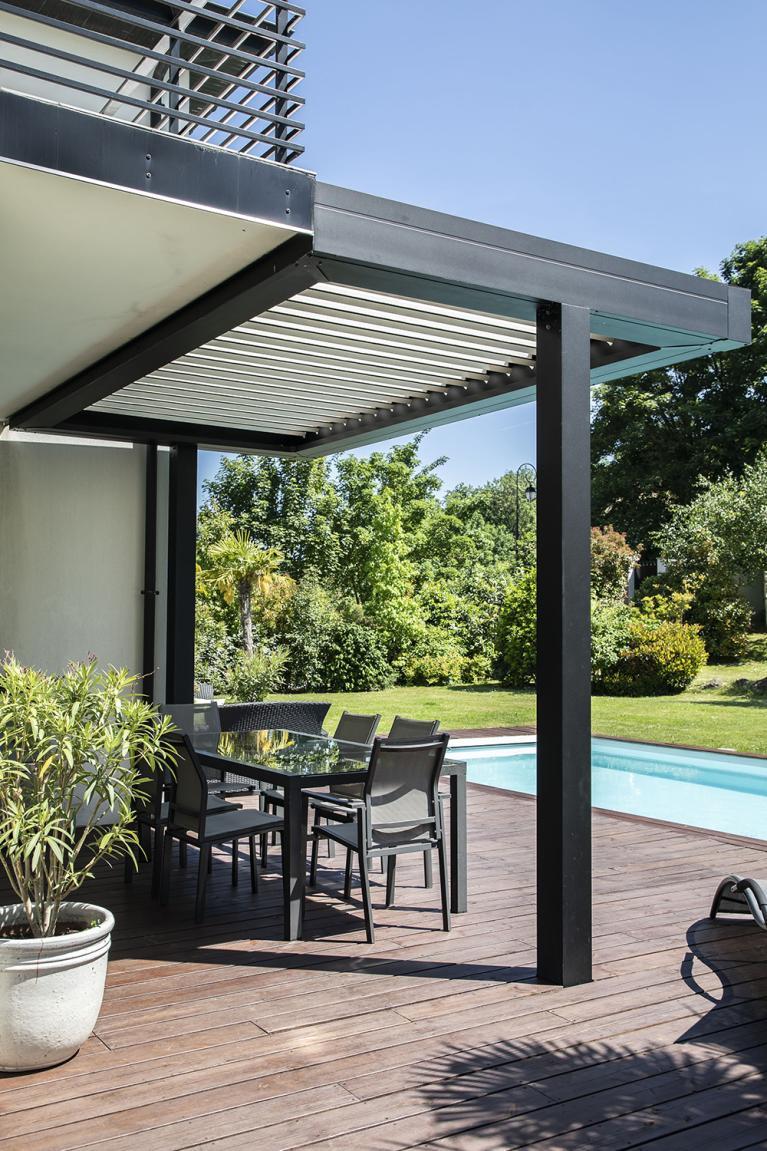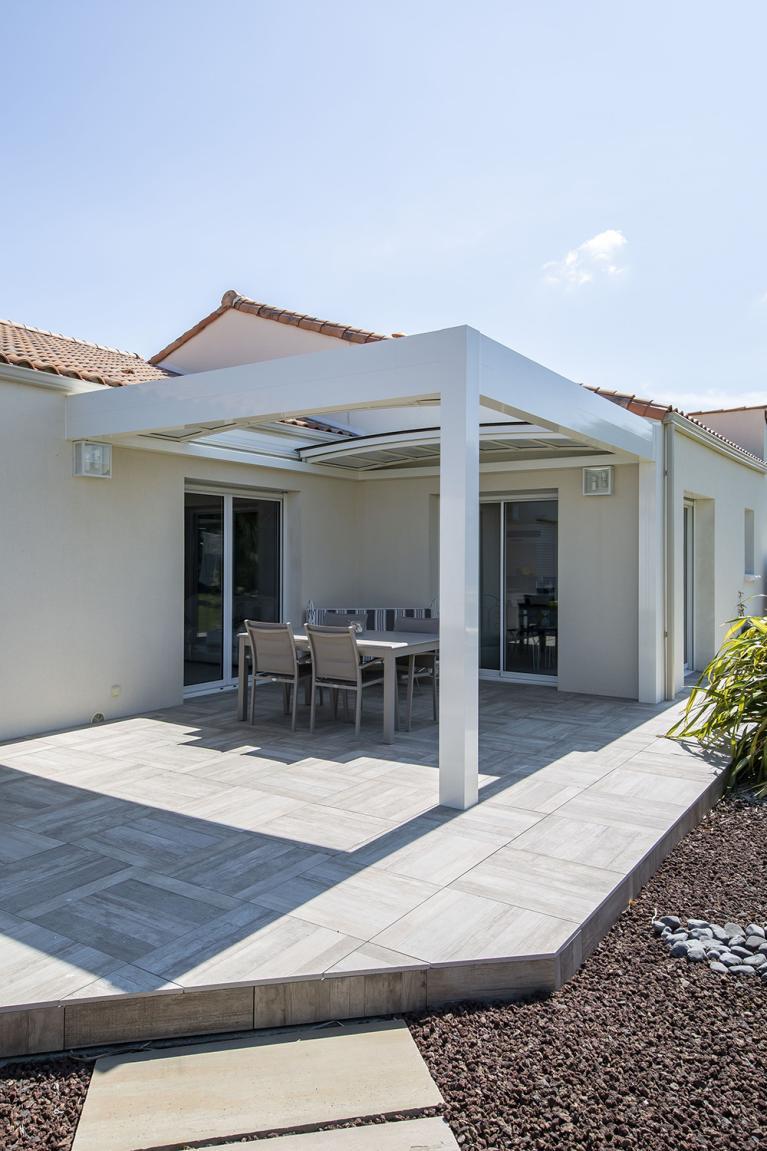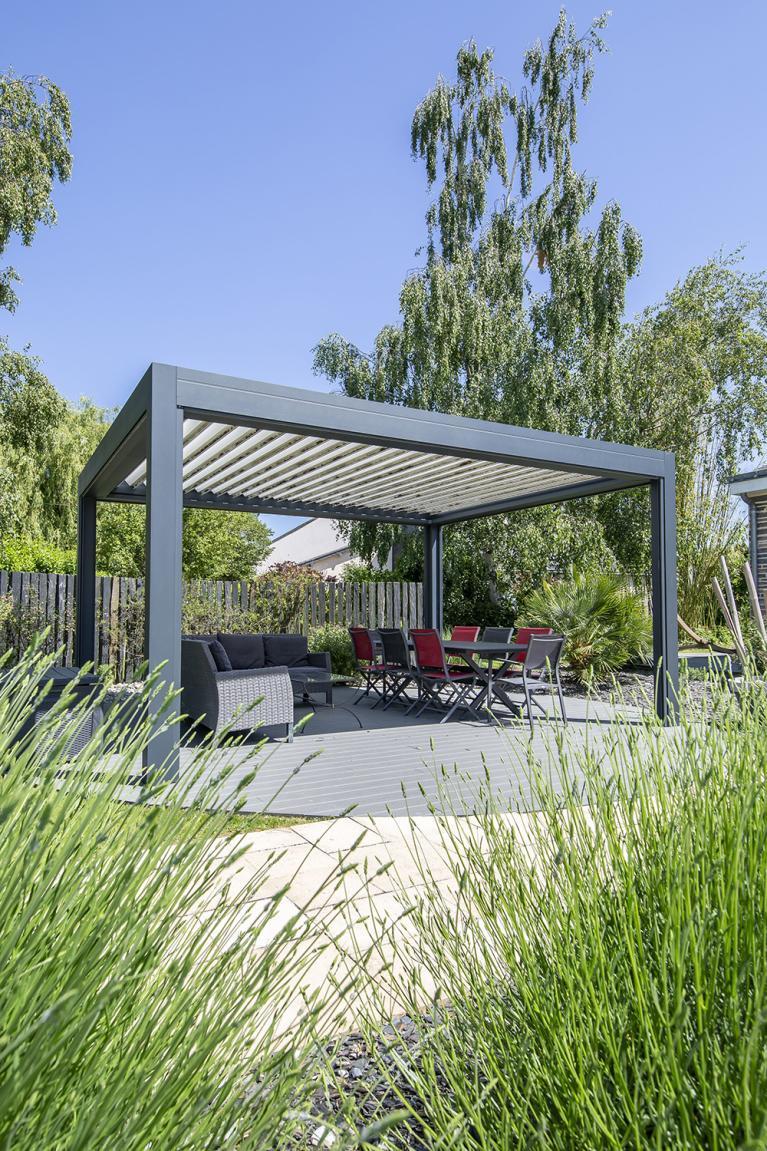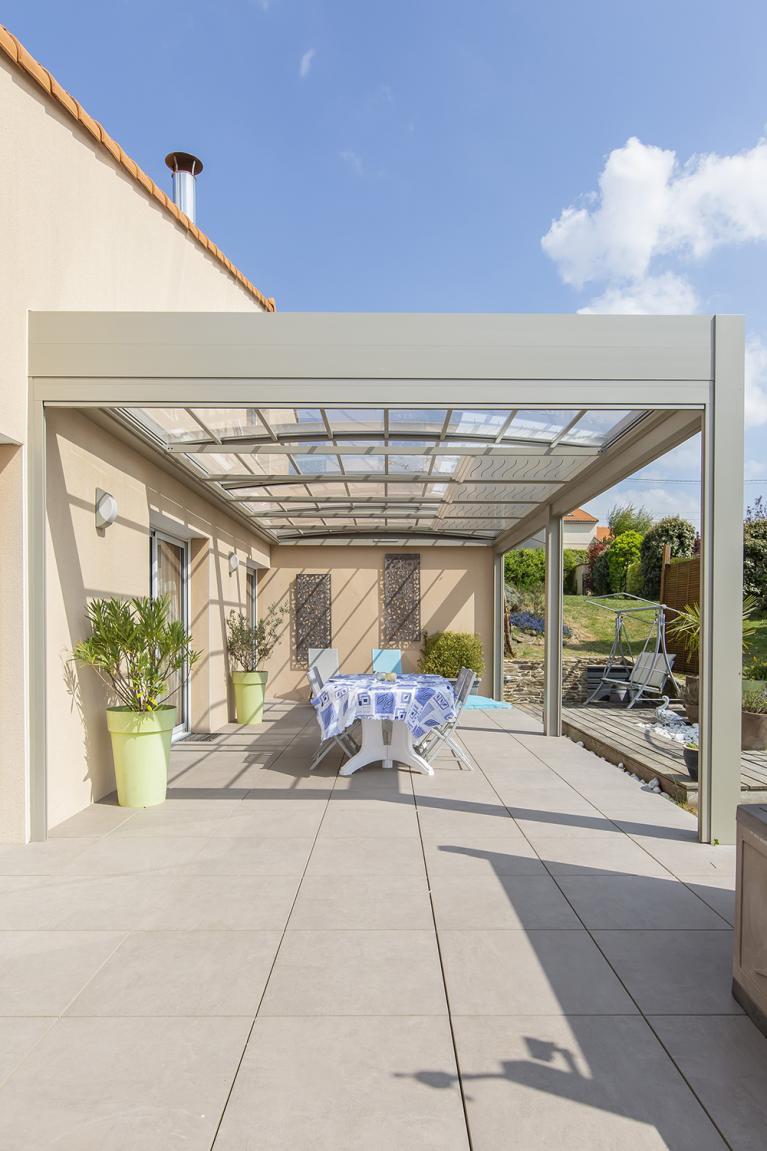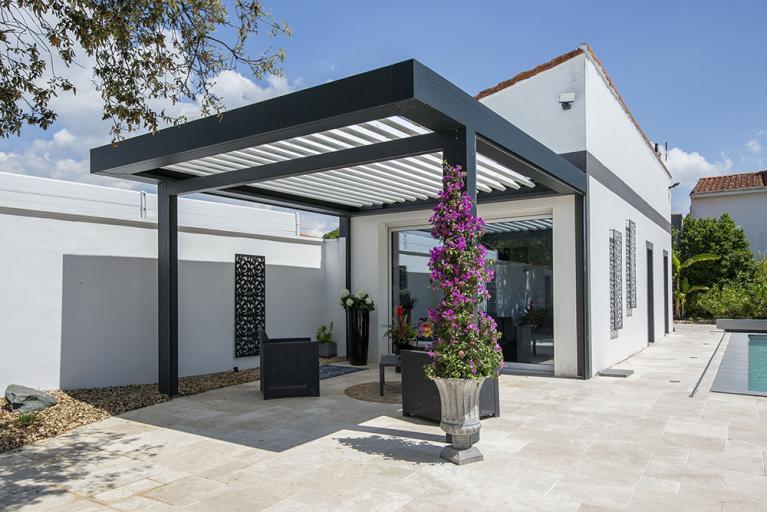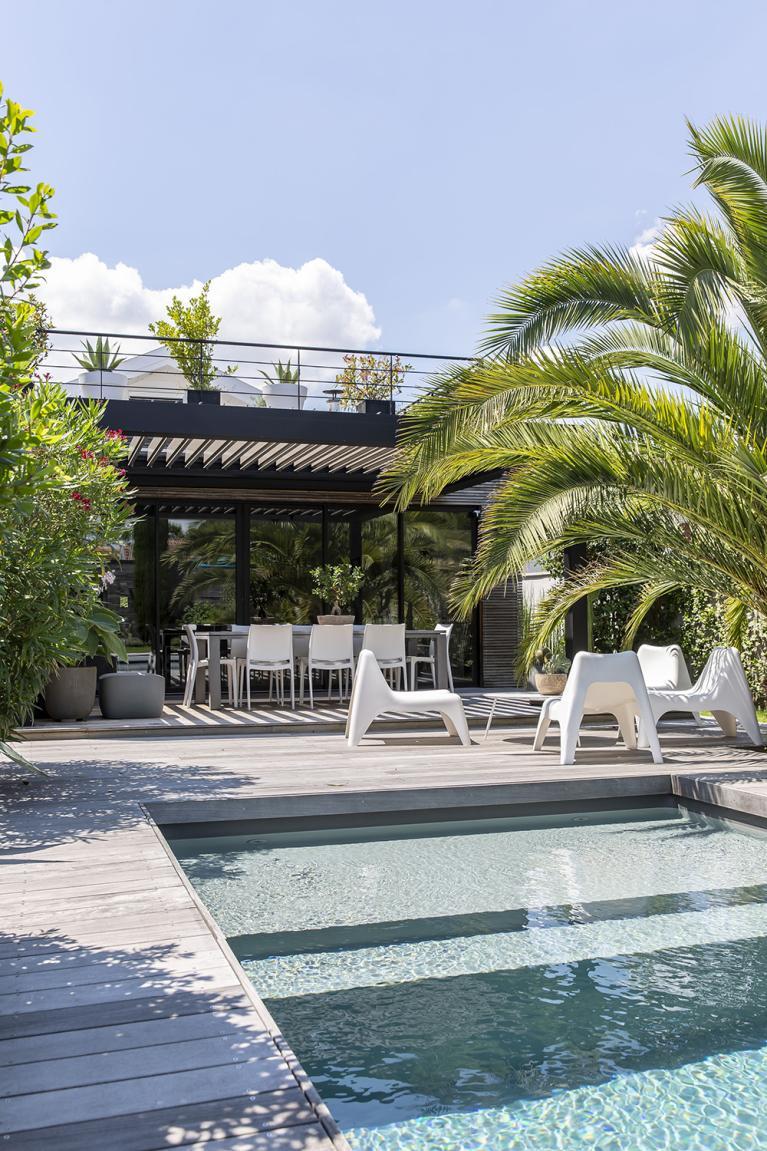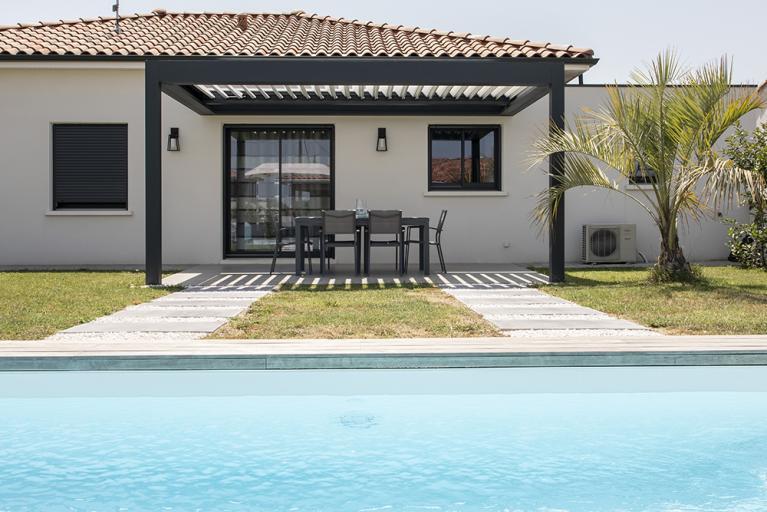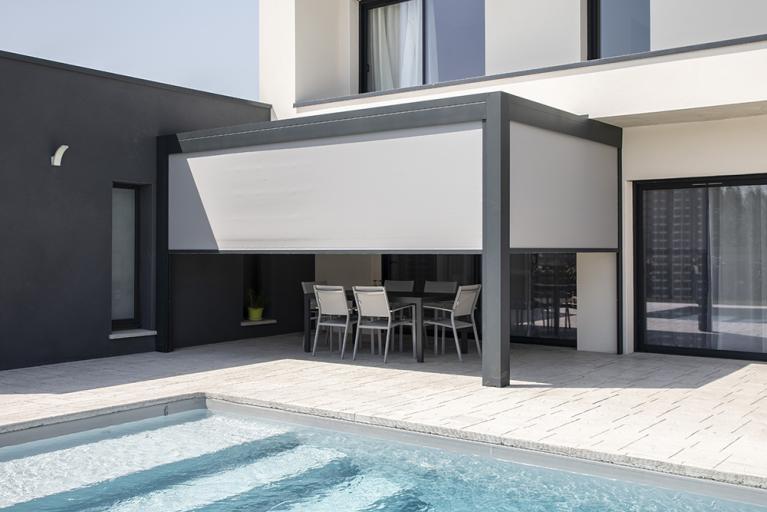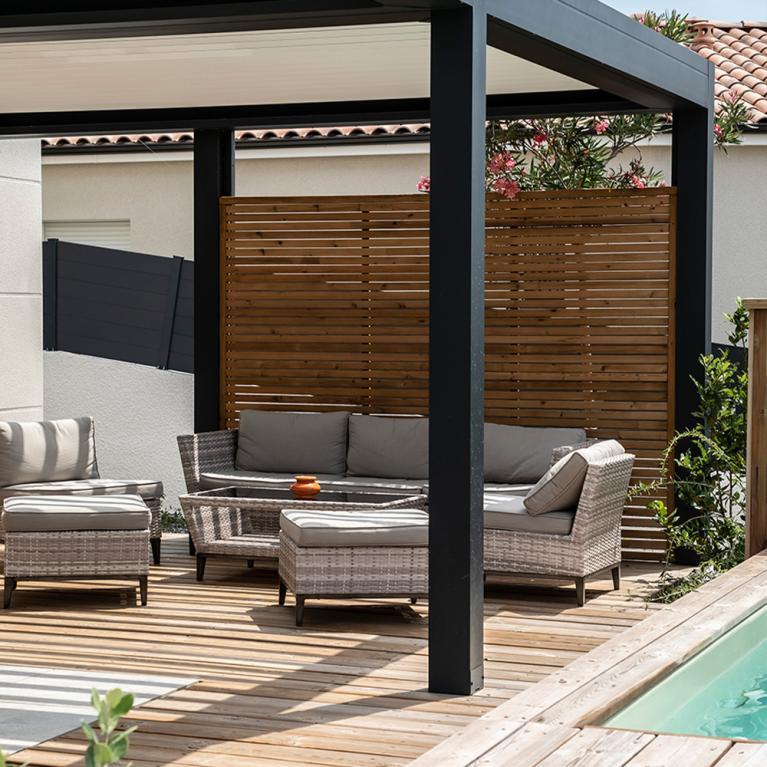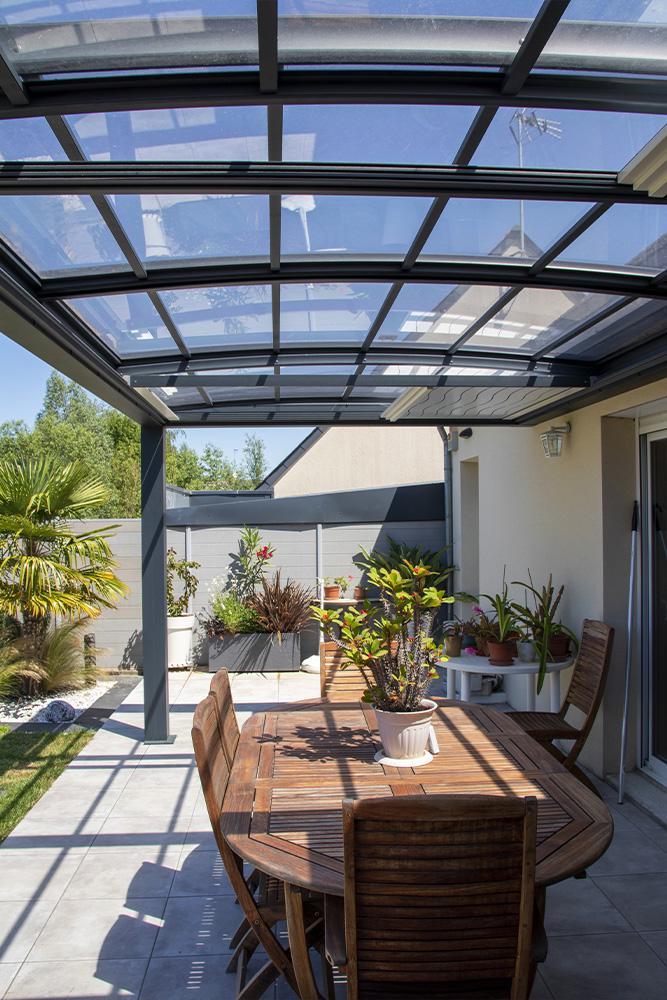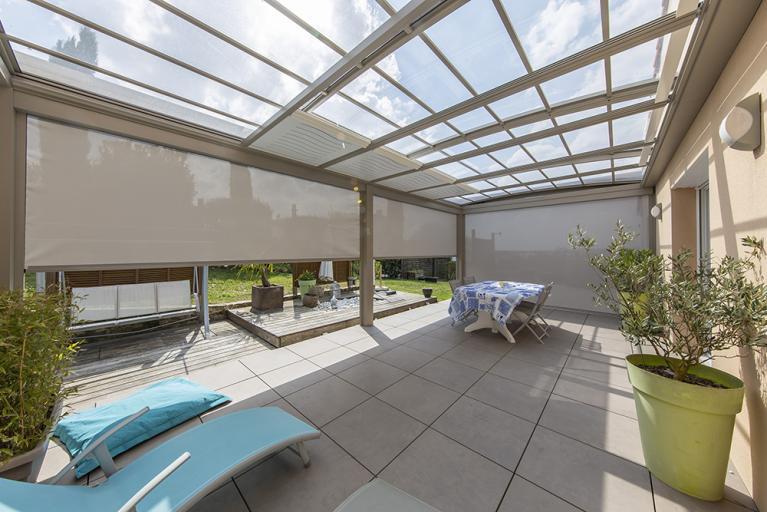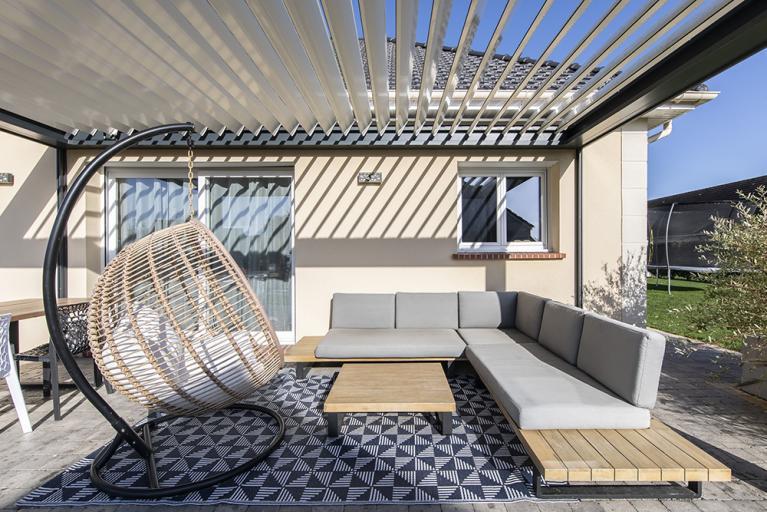What size for a pergola?
Whether custom-built or in kit form, a pergola enhances your outdoor space and promises warm moments with your loved ones. With a delightful view over your garden and the gentle summer rain lapping at your feet, you can already imagine yourself cozily ensconced under the pergola of your dreams. But what's the perfect size? What size should you choose to make the most practical use of your new space?
Before pruning, choose the right location for your pergola
Whether classic or bioclimatic, there are three main categories of pergola
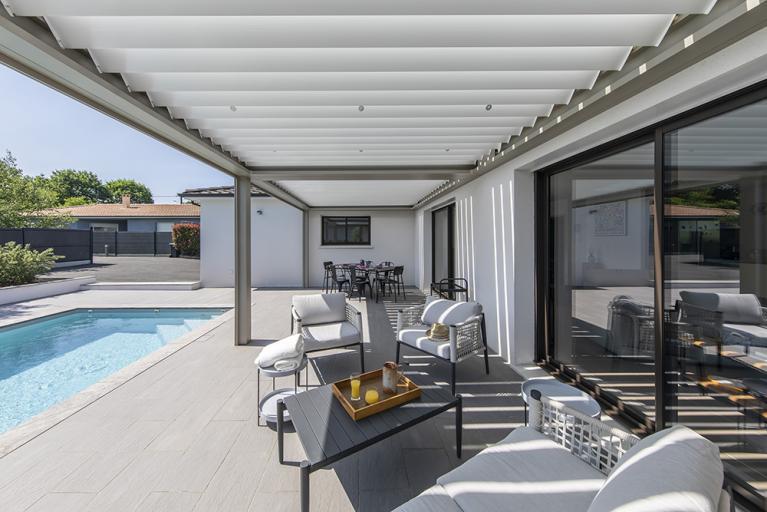
Lean-to pergolas have 2 pillars and are fixed to the front of the house;
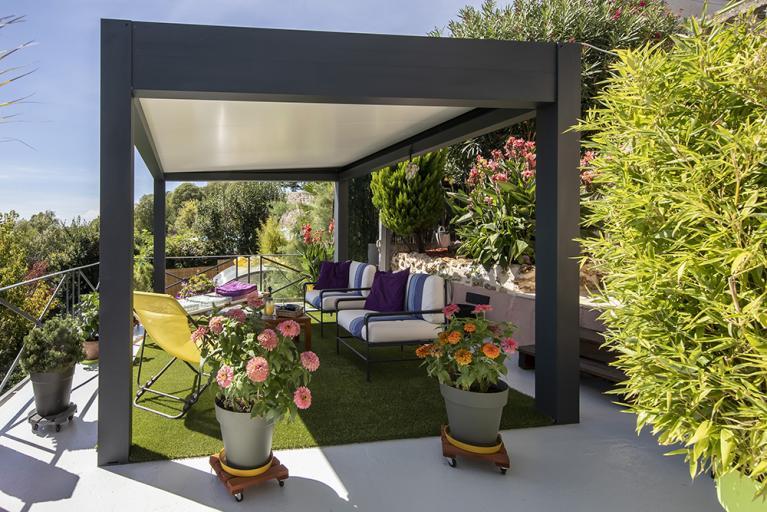
Freestanding pergolas (also known as freestanding or island pergolas) have 4 legs and can be placed on a terrace or in a garden;
Less well known are the so-called pillarless pergolas, which are ideal for small spaces because they fit in anywhere.
If you have a lot of space, a lean-to pergola is ideal for creating a direct link between your house and garden. In a way, it's the conservatory's little sister. With its many options, it becomes an additional living space. A freestanding pergola will be just as elegant, but the terrace will be encumbered by two extra pillars.
Perfectly designed to shelter part of your garden, freestanding pergolas create a cocooning, almost VIP, space in your property. It's the perfect place to slip in a hammock, an outdoor lounge or even a spa. Need more advice?
The perfect size pergola for your needs
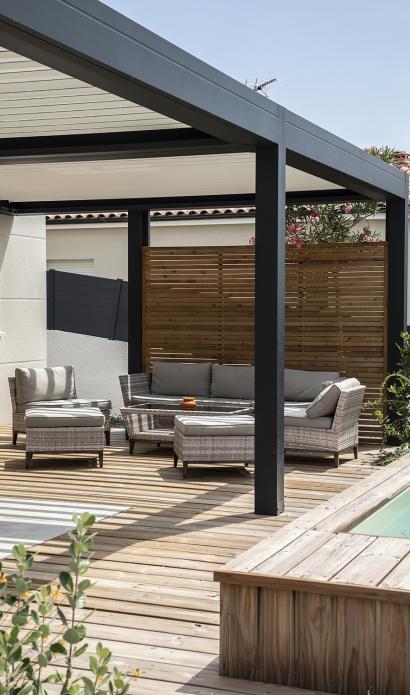
The large volume
Ideally, the pergola should be at least 2.20 m high, so that you can walk under it easily. However, it's best to avoid exceeding 3 metres in height if you're planning to be sheltered from the rain and wind. The ideal surface area is between 20 and 30 m², but you can of course opt for a smaller pergola if you have a small exterior.
Standard volume
On the other hand, the volume can be larger if the space lends itself to it. Most often rectangular in shape, the largest pergolas can measure up to 8 metres in length and 5 metres in depth. If you have a very large property and would like a larger pergola, we recommend that you have a double-module built.
Most of the time, width and depth are between 4 and 6 metres. The pergola is also available in small sizes, making it just as useful for converting small spaces. A minimum width of 1.20 m is recommended to avoid feeling cramped. The ideal depth is 3 metres. Imagine setting out a table and chairs, or a living room, and being able to walk around it at your leisure.
Dimensions according to your type of pergola
The lean-to pergola
If you choose to install a lean-to pergola, and your budget allows, it can perfectly well measure the entire length of the front. If you have a smaller space, the minimum length should be 1m20. You won't be able to get around your table, but don't try to install a smaller pergola - it won't cover enough space to protect you.
The suspended pergola
However, it's worth knowing that there are suspended pergolas, perfect for small spaces! They have no pillars and are fixed directly to the wall of the house. Smaller in size, they are often lighter than their conventional or bioclimatic counterparts. As far as width is concerned, a minimum size of 3 metres seems to be a good choice. Whether you have a lot of space or not, try not to cover more than ⅓ of your exterior, so that you can continue to enjoy the sunshine in your garden. Ask your technician for advice!
Read all the articles in the magazine
You have a project?
Would you like a personalised 3D study and a free quotation? Contact us by clicking below.
AKENA is...
Over 40 years of experience
Founded in 1981 by one man, we now have more than 500 employees dedicated to making your project a success.
Made in France
A historic site and two factories covering more than 25,000 m² in Dompierre-sur-Yon in the Vendée region (85)
Innovative and tailor-made products
At AKENA, we are brimming with new ideas to improve and enhance our products.
The European leader in conservatories, pergolas...
But not only! AKENA also offers a complete range of carports and pool houses.
